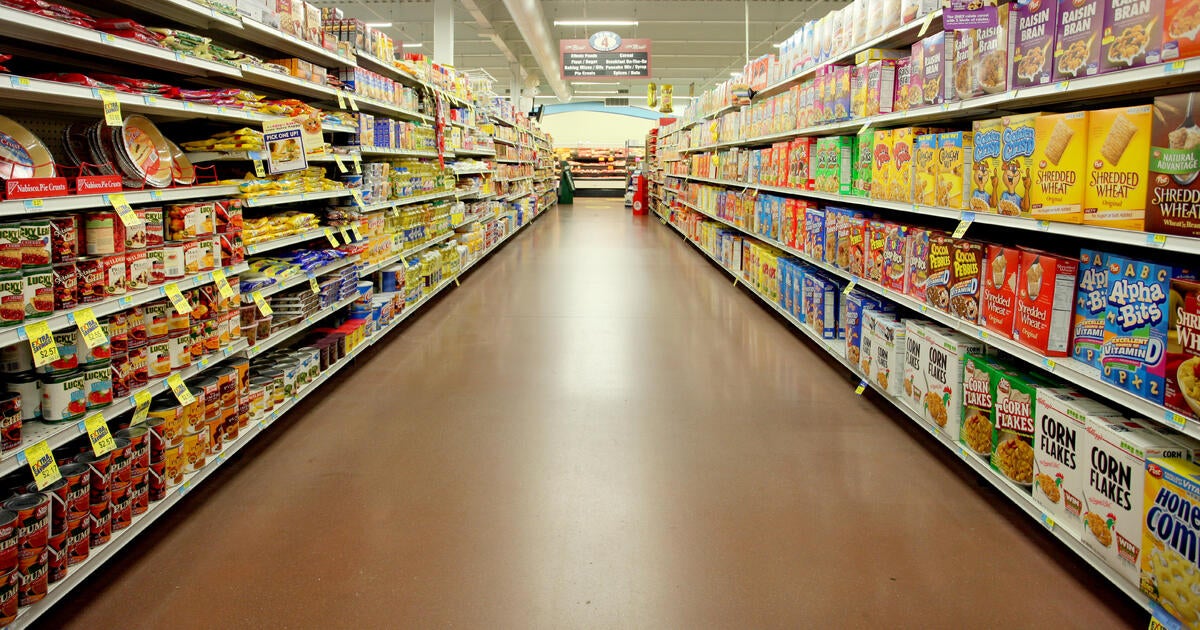Americans could soon face higher inflation as businesses pass along tariff costs, Fed official says

Americans could see inflation tick higher in 2025 as businesses start to pass on the cost of the Trump administration’s tariffs to consumers through price hikes, Beth Hammack, president and CEO of the Federal Reserve Bank of Cleveland, told CBS News’ Kelly O’Grady in an interview.
So far this year, inflation has remained relatively muted despite President Trump’s wide-ranging tariffs, partially because many businesses stockpiled goods and manufacturing parts ahead of the import duties’ implementation. Some business facing higher tariffs also chose to hold off on passing cost increases onto consumers as they awaited more clarity around where tariff rates would settle. Additionally, the Trump administration instituted numerous pauses on threatened levies, delaying cost increases for businesses and consumers.
Mr. Trump has been pushing the Fed to cut interest rates, citing subdued inflation numbers and cuts from other major central banks, such as in the U.K. and the European Union. But the Federal Reserve last week maintained its benchmark rate at the same level where it’s been parked since December 2024, with Fed Chairman Jerome Powell citing the risks of higher inflation due to the Trump administration’s tariffs.
That’s a danger also highlighted by Hammack, who said she believes inflation could reach a 3% annual rate this year, representing a pace that would be 1 percentage point higher than the Fed’s goal of a 2% annualized rate.
“Individual businesses have been trying to hold back on, passing on those [tariff] costs, because they’re worried about what it might mean for demand,” Hammack told O’Grady. “They’ve been selling inventory that they’d accumulated early in the year, and so they didn’t need to charge for the tariffs on that, but they’re coming through those stockpiles.”
She added, “They’re coming to the point where their margins are getting squeezed and they need to start passing that onto consumers.”
Many households are still struggling with the cost of living, with half of Americans saying they view grocery prices as a major source of stress in their life right now, outpacing housing cost and health care, according to a new poll from The Associated Press-NORC Center for Public Affairs Research.
“Two-speed economy”
Hammack said the U.S. appears to be in a “two-speed economy.”
“The top part of the income spectrum is doing incredibly well,” she noted. “They’re feeling a lot of excitement about the stock market, how their 401(k)s are doing, and they’re feeling flush with cash.”
But, she added, low-income households are facing a lot of economic challenges.
“I hear individuals trading down, they go to the supermarket and they can’t buy ground beef,” Hammack said. “They’re buying hot dogs, they’re looking at their $400 emergency fund, and it’s not able to pay for a new air conditioner or the car repairs that it used to be able to pay for.”
Price pressures from the Trump administration’s tariffs could cause a one-time increase in costs as businesses adjust their prices to cover the import duties, she added. Fed officials are focused on making sure that the price hikes don’t become what she calls a “more persistent inflationary problem.”
“What I’m focused on is making sure that we have an economy that’s working for all Americans,” Hammack said. “Which is why I believe we need to stay really focused on the inflation side of our mandate.”
At the same time, Friday’s disappointing jobs report shows that the labor market is also facing fresh challenges, with employers hiring fewer workers than expected in July. The Fed’s mandate is to keep both inflation and unemployment low, with the central bank turning to interest rate hikes to cool inflation or rate cuts to help the job market.
With both inflation on the rise and the job market experiencing some headwinds, the Fed has a delicate balancing act, she noted.
“This is a really challenging time for monetary policy makers, because both sides of our mandate are being challenged,” Hammack said. “And so the decision of which way to go and how quickly to move is a really difficult one right now.
The Federal Reserve will make its next decision on interest rates in September, and some analysts are already calling for a rate cut with the US economy seeing three straight months of weak jobs growth. Hammack admits waiting too long to cut rates because of potential inflation is a risk.
“If we wait too long to cut rates, that could mean that more people are losing their jobs than we’d like to see,” Hammack said. “We have to balance those two factors when we’re trying to decide what’s right to steer the economy forward.



